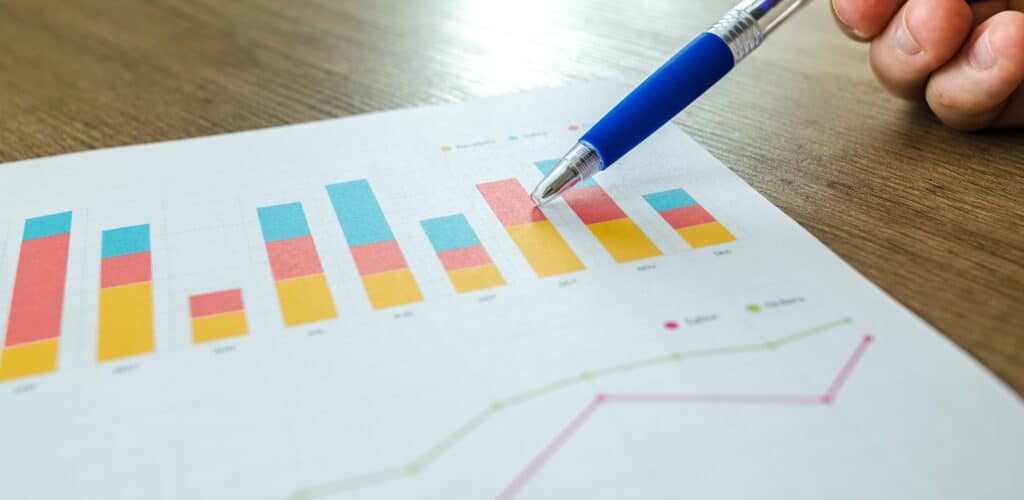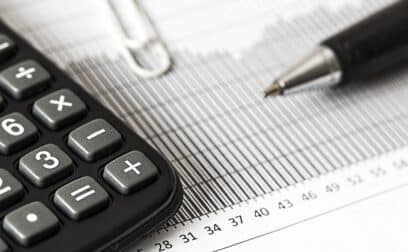Capital employed refers to the amount of capital investment a business uses to operate. It can help indicate how a company is investing its money.
This guide explains everything you need to know about how to calculate capital employed.
What is capital employed?
Capital employed, or funds employed, is one of many financial metrics and refers to how much capital a company has invested into itself through means such as purchasing equipment, hiring employees and so on. It can also refer to how much capital has been used for a particular project, whether that’s opening stores in other locations or developing new products.
Capital employed is often used to measure a company’s profitability and efficient use of capital.
What is the formula to calculate capital employed?
The most commonly used formula to calculate capital employed is as follows:
- Capital employed = total assets – current liabilities
Essentially, capital employed is calculated by taking the total assets from the company’s balance sheet and then subtracting all current liabilities, or short-term financial obligations.
It’s also possible to calculate capital employed with the following formula:
- Capital employed = fixed assets + working capital
Fixed assets are assets purchased for long-term use, such as property, plant and equipment. Working capital is the capital available for daily operations and is calculated as current assets minus current liabilities.
Whichever formula you use, make sure you stick with it – do not switch between them when making comparisons as the calculation will differ depending on which formula you go for.
Let us help you calculate return on capital employed with this handy calculator.
What does this tell you?
Capital employed can give you an overview of how well a company is investing its money to generate profits. Capital investments could include stocks and long-term liabilities. It also produces a simple measure of the value of assets held by a business against current liabilities. Both of these measures can be found on the company’s balance sheet. A current liability is the portion of debt that will need to be repaid within a year.
Overall, calculating capital employed makes it clear whether a business has the assets it needs to cover all the debts that might need to be repaid in a short space of time. If this is not the case, it will show that the business has not been investing its capital effectively.
Calculating return on capital employed (ROCE)
Capital employed is better interpreted by combining it with other information to form an analysis metric, such as return on capital employed (ROCE). ROCE is a financial ratio that’s used to assess a company’s profitability and how well a company is generating profits from its capital. Analysts, investors and stakeholders use the return on capital employed ratio when analysing a company as it can be a better gauge for the performance or profitability of a company over a longer period of time. Investors use it to help work out what their return might be in the future.
A higher ROCE generally suggests a more efficient company. However, it could also indicate a company with a lot of cash on hand as cash is included in total assets. This means high levels of cash can sometimes skew this metric.
To calculate ROCE, you need to divide net operating profit, or earnings before interest and taxes (EBIT), by capital employed. You can also calculate it by dividing earnings before interest and taxes by the difference between total assets and current liabilities.
What is the average ROCE?
Generally, the higher the ROCE value, the better. A good rule of thumb is that you should be aiming for a ROCE of at least 15% to 20%. However, the averages will differ depending on the industry you’re in. For example, in manufacturing, ROCE can be more than 25%, while in retail, it can range from 5% to 15%.
A business should be looking to generate a ROCE that is consistently more than its weighted average cost of capital, or WACC. Put simply, this means it needs to make a bigger return on the money spent funding the business than the average cost of that funding (from both debt and equity).
Example capital employed calculation
Let’s take a look at an example. The following financial information applies to Company XYZ:
| Current assets | R150,000 |
| Non-current assets | R350,000 |
| Current liabilities | R60,000 |
| Non-current liabilities | R150,000 |
Using the formula mentioned above, we can work out that:
- Total assets – current liabilities = capital employed
- R150,000 + R350,000 – R60,000 = R440,000
What is a good return on capital employed?
Generally, a higher return on capital employed indicates that your company is in a good financial position. The higher the number, the more profit the company is generating.
If you want to work out whether your company has a good return on capital employed, you can compare your company’s ROCE to that of other companies in the same industry. The company with the highest ROCE is the company with the best profitability.
You can also compare ROCE to returns from previous years. If the ratios are trending downwards over a period of several years, this shows the company’s profitability is declining. But if the ROCE is increasing, this indicates the company’s profitability is also on the up.
Calculating capital employed from a balance sheet
One of the easiest ways to calculate capital employed is to look at the company’s balance sheet. To do this, follow the steps below:
- Locate the net value of all fixed assets: The non-current (long-term) asset section of the balance sheet will include fixed assets.
- Add capital investments: This can include any individual, financial institution or venture capital funding or investments that have been made.
- Add current assets: In the balance sheet, assets will be divided into current assets and non-current assets. Current assets can be converted to cash in one year or less, while non-current assets take longer to convert. Add all current assets to your calculation. It’s easier to use the original cost but you might prefer to use the cost of replacement, which factors in depreciation.
- Subtract current liabilities: These are your short-term financial obligations, usually due within a year. This can include short-term debt, accounts payable, accrued expenses and dividends payable.






 yet? Register here!
yet? Register here!